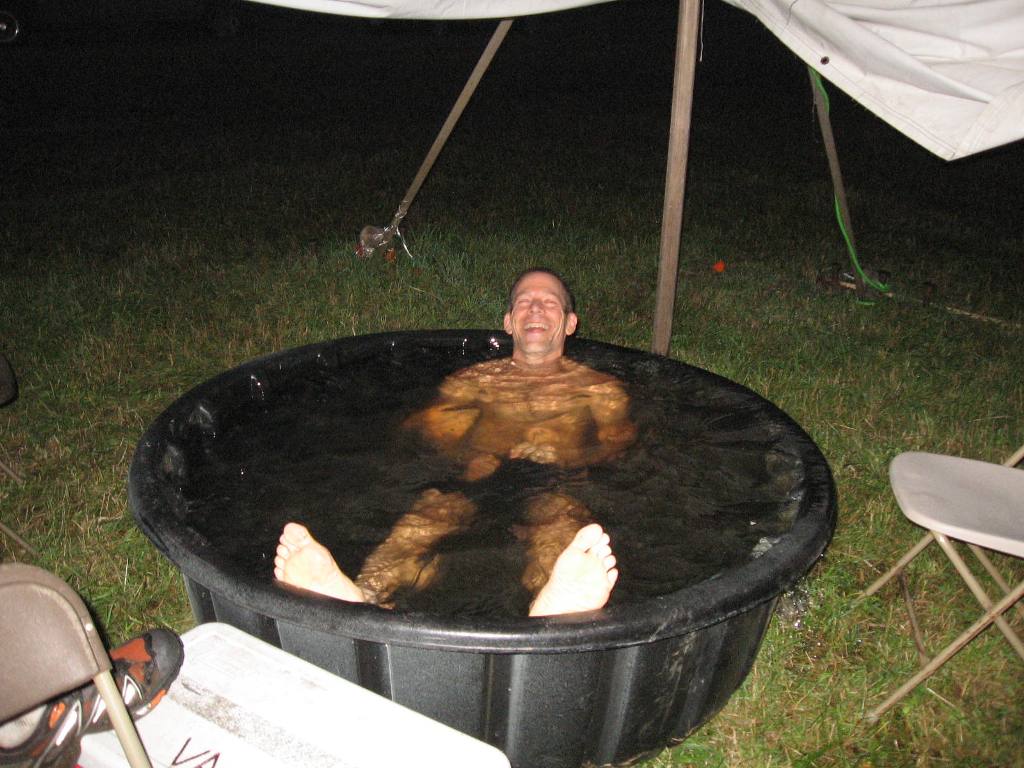HEAT AND HUMIDITY – NOW’S THE TIME TO PREPARE
Written by Jack Pilla, Run Formula Coach
HEAT AND HUMIDITY
In running the VT100 five times I can’t remember it not being hot and humid so runners should count on it being that way this year too.
Like any other element you would prepare for in your training such as hills, altitude and night running, you should spend time training for the heat, allowing your body to slowly adapt.
I find it takes 5-10 days for the body to physically adapt to the heat. In doing so the body learns to reduce thermal and cardiovascular strain by increasing plasma volume and increasing sweat rate. Choose not to heat train, this could be you:
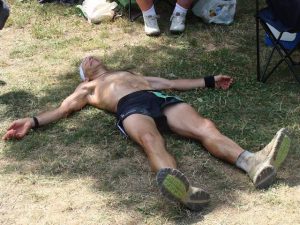
OK, so you want to train for the heat. With 3 weeks until the VT100, you have plenty of time. Instead of planning every run to avoid hot sticky days by running in the early am or end of the day, take some time to train in the heat of the day.
But do it gradually.
For the first day, don’t pick a 90 degree day to get in a 5 hour run. Maybe start with 30 minutes in the heat. Then gradually increase your time out there each day. Later, as you get more comfortable, add some hill work or speed work.
Also understand that running in the heat will increase your heart rate and effort so slow down as much as needed to adjust. Your heart rate may increase 5-10 bpm, so you make need to take it down a notch to avoid blowing up. But with heat training your heart rate should stay lower.
Here in the northeast we are experiencing a heat wave so it’s an opportune time to heat train.
What if you are in a colder climate or can’t run in the heat of the day? Maybe it’s an early spring race and there has been no heat to train in? You can spend time in the sauna, gradually increasing the time and even do some core work if there is room.
Another way which I’ve done many times for spring races is to over dress. I’ve worn winter running clothes in May, long sleeve shirts, winter hat, etc. You might look like a fool when everyone else is running in shorts and a t-shirt but it does work.
And then there’s the humidity on top of the heat that will increase your sweat rate and your body’s need to replace fluids and electrolytes. Make sure to work on your hydration during this heat training and figure out your body’s needs. Last month Beth wrote on article on hydration, make sure you are up to date on that.

RACE DAY BODY TEMP MANAGEMENT
In running the VT 100, I always had a goal to run the race and have fun, no matter the finish time. Feeling good for the most part and avoiding the death march to me was a successful day.
Yes, there will be high and low periods throughout the race but hopefully more positive moments.
Keeping the core body temperature low will help you have a good race day as it improves appetite and digestion because as core temperature regulates, blood can be shunted to the gastrointestinal (GI) system for absorption of nutrients and fluids.
Conversely, as core and skin temperature rises, the body sends blood to superficial capillaries to promote both sweating and heat loss via convection and conduction; thus drawing blood away from GI system and therefore digestion slows. So keeping the core cool should be a priority. Here are numerous ways to manage the core temp to hopefully make it a successful day.
Start with heat and core body temperature management as early as possible.
Don’t overdress. If you feel warm waiting at the start line, you’ve already overdressed. You will warm up almost immediately. If you are wearing a hydration vest, that may adds another 5-10 degrees of body heat.
Arm coolers can be worn, wet and/or stuffed with ice to promote cooling.
Mr. Hanky. That cotton bandana that you made fun of, it has a purpose. Soak it in water at the aid stations or from a stream and wrap it around your neck. You can even add ice to it when available.
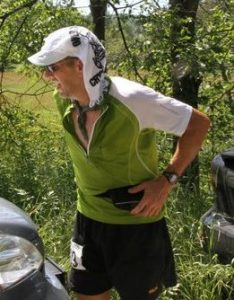
Wear a light weight, breathable running cap. It will protect you from the sun. And just like Mr. Hanky, you can add ice to it and also dip it in water. Speaking of ice, you can add to your sports bra.
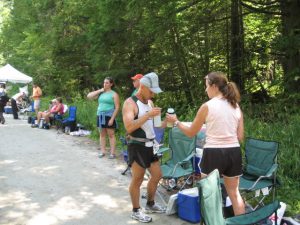
Along the VT100 course you will notice large water tubs and/or hoses for the horses. It’s a great source to wash the sweat off your face and cool the core. I’ve even know a few runners who have completely immersed themselves in these tubs to stay cool.
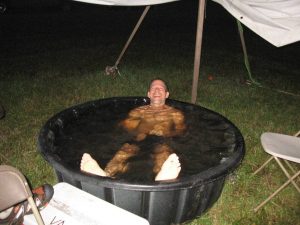
Streams, also along the VT100 course there will be some streams. This is another great source to do a quick water bath to cool down the core.
Sponge baths, not sure what will be on course but occasionally you will see a bucket with sponges. Use them, it will feel great. Have a crew? Have them bring around a bucket and sponges.
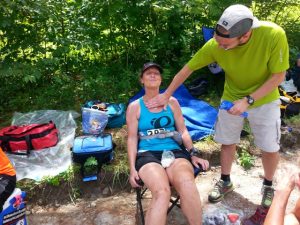
Body Glide: With heat and humidity for most athletes comes sweat. With sweat chaffing can occur. Body Glide or other types of body lubricants can help avoid most of the chaffing. And make sure to reapply when needed and put everywhere and anywhere. I’ve seen runners taken down by serious chaffing. I usually carry around a small stick or have ready in a drop bag so I can reapply throughout the race.
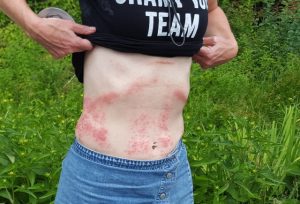
ADDED BONUS: HORSE AND DEER FLIES
With the heat and humidity we also get nasty flies, big blood sucking horse and deer flies. Bug spray? They laugh at it. Wearing a running cap helps keep them off your head and if you wear it backwards, it protects the back of your neck which is a favorite spot for them to bite. You can also use the hat to swat them where your arm can’t reach.
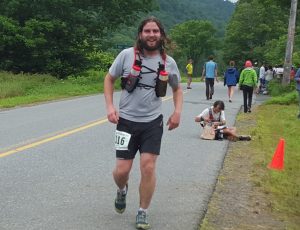
Heat and humidity are just everyday challenges we face in running long distance races. Be prepared for the worst and make heat your friend.
Proper heat training can lead to big performance improvements and a successful race day. Have fun!!

